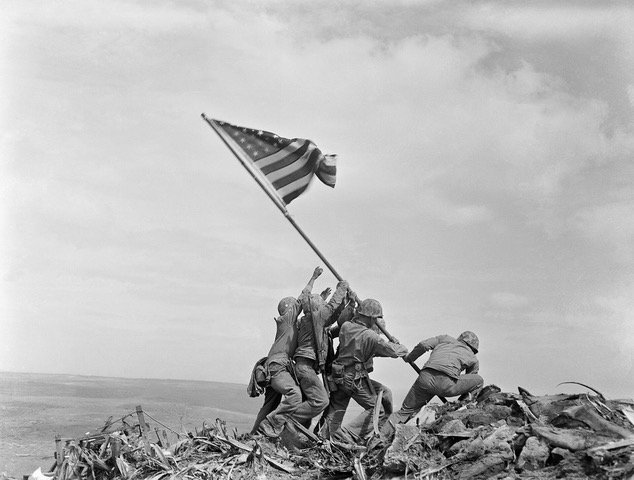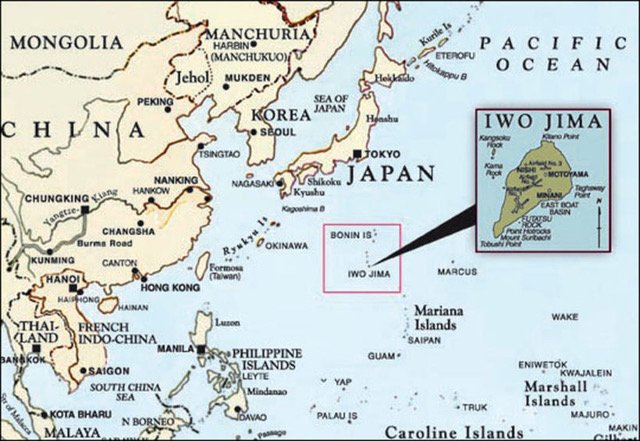Leadership and Sacrifice
80th Anniversary of the Battle of Iwo Jima
Raising the flag on Iwo Jima
February 23, 2025, marks the 80th anniversary of the iconic flag raising on Mount Suribachi during the Battle of Iwo Jima (February 19 – March 26, 1945).
The inspiring image, captured by Joe Rosenthal of the Associated Press just four days into the grueling five-week Battle of Iwo Jima, became an iconic symbol of the determination, selfless service and sacrifice of the United States Marine Corps.
The cost of the hard-fought victory to defeat the Japanese defending the Pacific atoll was staggering. Of the six men immortalized in Rosenthal’s image, three – Sergeant Michael Strank, Corporal Harlon Block and Private First Class Franklin Sousley – were killed in action in what would become the deadliest battle in Marine Corps history.
While bravery was key to winning the battle; adroit leadership was essential to ensuring it was the right fight on the way to victory over Imperial Japan.
Strategic Debate: The Decision to Invade Iwo Jima
By early 1945, Japanese air forces on Iwo Jima – an island just 750 miles south of Tokyo – presented a significant hindrance to America’s increasing air raids on the Japanese mainland being launched from the Mariana Islands to the southeast. The goal of the Iwo Jima offensive – fought primarily by the Marine Corps, with support from the U.S. Navy and Army Air Forces – was to seize the island and its two key airfields, South Field and Central Field, to provide a base for air operations for the Allies much closer to the Japanese mainland.
The decision to invade the volcanic 8 square mile fortress island bristling with Japanese defenses was a controversial one among U.S. military leadership.
Some, including Admiral Chester Nimitz and General Douglas MacArthur, saw strategic value in capturing the island, as Iwo Jima's airfields would allow fighter escorts to protect B-29 bombers on long missions over Japan. Others, including former Chief of Naval Operations Admiral William V. Pratt, doubted that the value of capturing the island justified the heavy losses that likely to be incurred – a question historians debate to this day.
The Allies’ fears of high causalities would be tragically confirmed. The Japanese, commanded by Lieutenant General Tadamichi Kuribayashi, had transformed the island into a near-impenetrable stronghold, utilizing tunnels, pillboxes and concealed artillery to inflict maximum casualties on the invaders. Aware that his garrison stood little chance of victory if the Americans launched an invasion, Kuribayashi aimed instead to inflict heavy casualties to convince the U.S. and its allies to reconsider their plans to invade the Japanese home islands.
American Leadership: Inspiring Determination in the Face of Fierce Resistance
A massive aerial and naval bombardment aimed at softening up the Japanese defenses began on February 16. But the rain of shells failed to neutralize the heavily fortified Japanese positions. U.S. Marines, who landed on the beaches on February 19, encountered fierce resistance from Japanese soldiers determined to fight to the death in a last-ditch effort to protect their homeland from invasion.
Over the following weeks, U.S. forces gradually captured key positions – including Mount Suribachi – under the leadership of Marine General Holland “Howlin' Mad” Smith (often referred to as the “Father of Amphibious Warfare”). But progress was slow as the Japanese defenders used their tunnel system to launch surprise counterattacks and the Marines struggled to secure the island’s well-fortified positions.
In the face of enormous challenges and heavy casualties, Marine Corps leaders became increasingly creative in altering the ground tactics of their resilient Marines. Officers like Colonel Harry Liversedge and Major General Graves Erskine guided their troops through harsh terrain under constant enemy fire. The resourcefulness of junior officers and non-commissioned officers (NCOs) to make quick decisions in the heat of battle was essential to victory, as the entrenched Japanese defenses demanded rapid, creative combat tactics.
By March 16, most of the island had been secured, but sporadic fighting continued until March 26, when the battle officially ended with the last Japanese defenders either killed or captured.
Sacrifice and Strategy: The Battle’s Aftermath
The cost of victory at Iwo Jima was enormous. Out of the approximately 70,000 U.S. Marines and Navy personnel who participated in the battle, there were nearly 26,000 casualties (6,800 killed in action, 19,000 wounded).
Iwo Jima Memorial
The victory did play a crucial role in saving the lives of thousands of American flight crewmembers by eliminating the Japanese fighter threat and serving as an emergency landing site for damaged or fuel-depleted bombers returning from raids over Japan. It also played a role in high-level decision making about ending the war in Japan. U.S. leaders were convinced that the Japanese would defend their island with ferocity – a strategic issue the president would have to face head-on.
The deadly Battle of Iwo Jima – and the iconic image that inspired the United States Marine Corps War Memorial – would forever cement the U.S. Marine Corps’ reputation as one of the world’s most elite, courageous and formidable fighting forces.
This hard-fought victory came at a steep price, but it remains a testament to the unwavering courage, selfless service and heroism of the U.S. Marines and sailors who fought for every square inch of the black sands of Iwo Jima.



